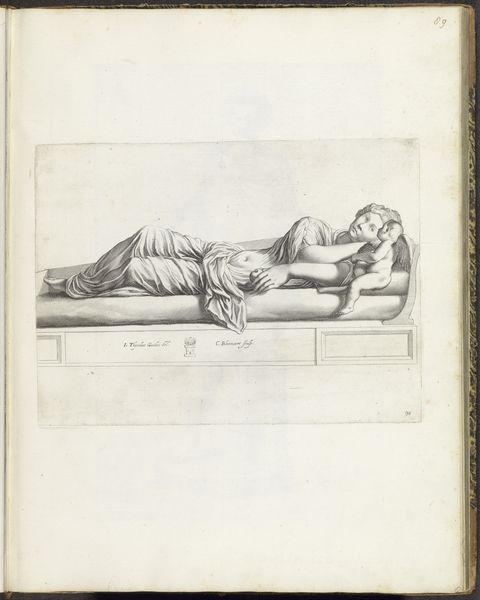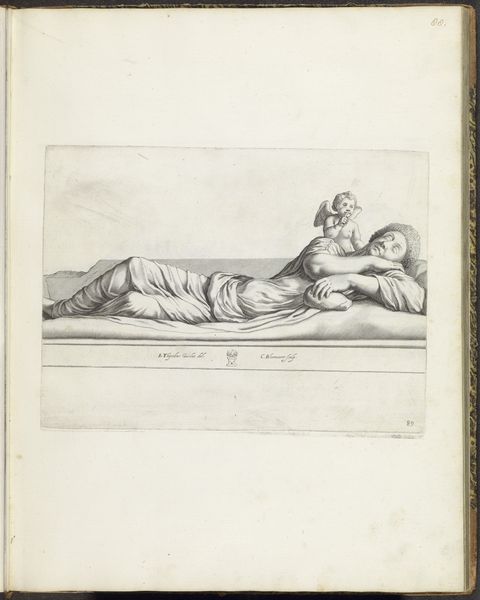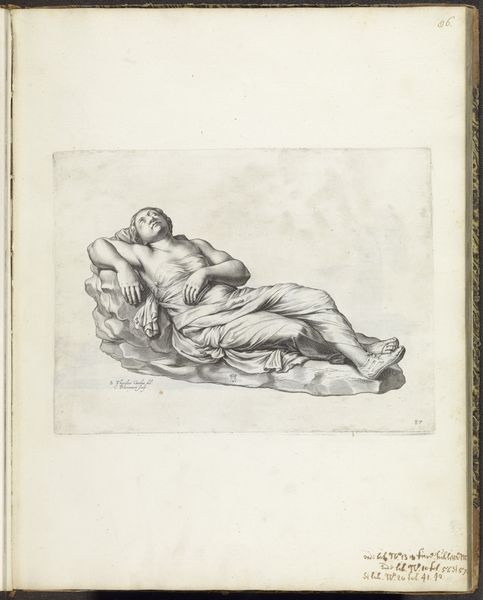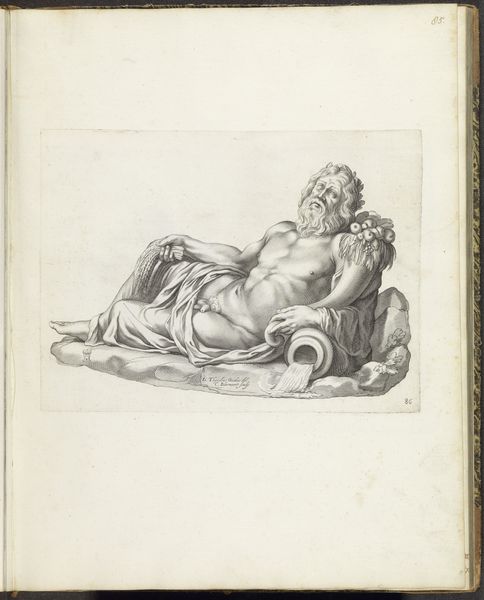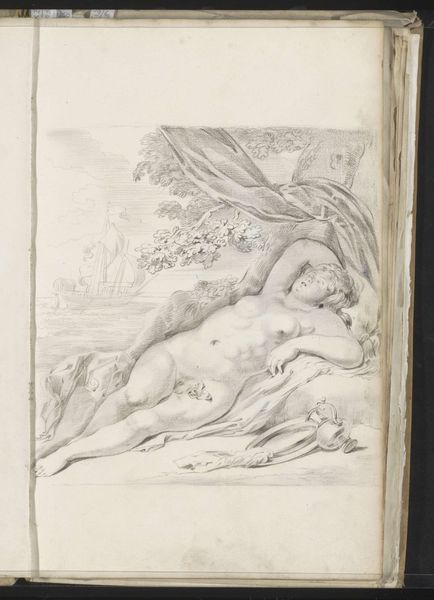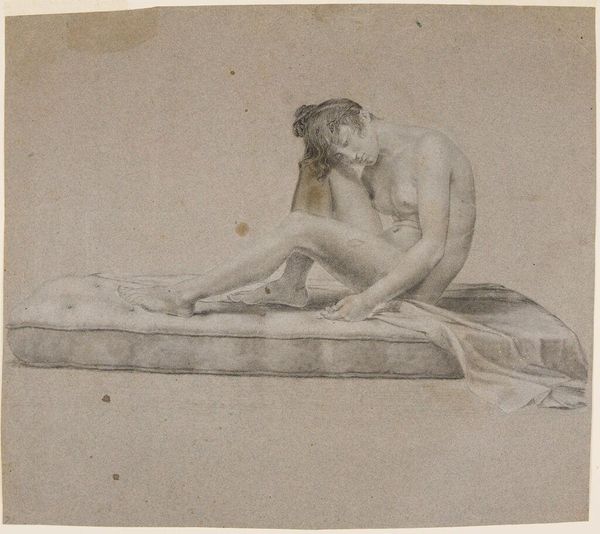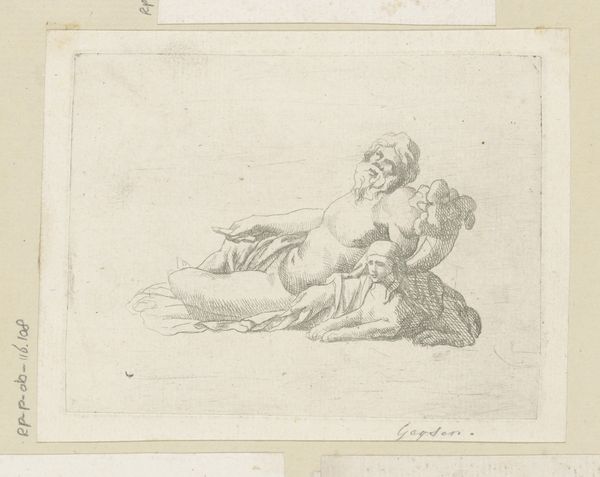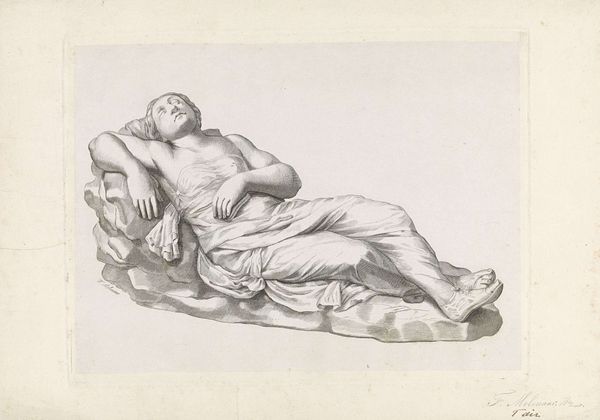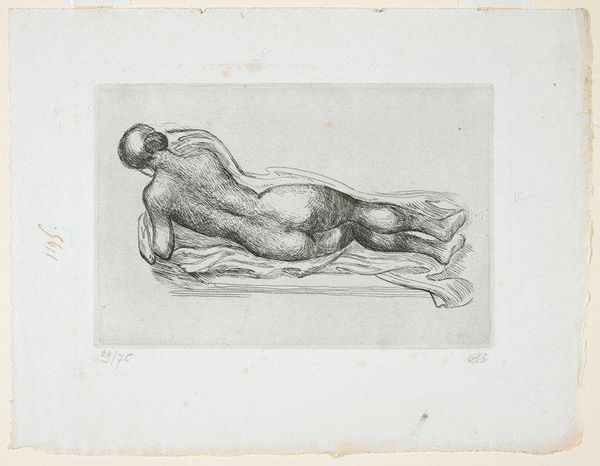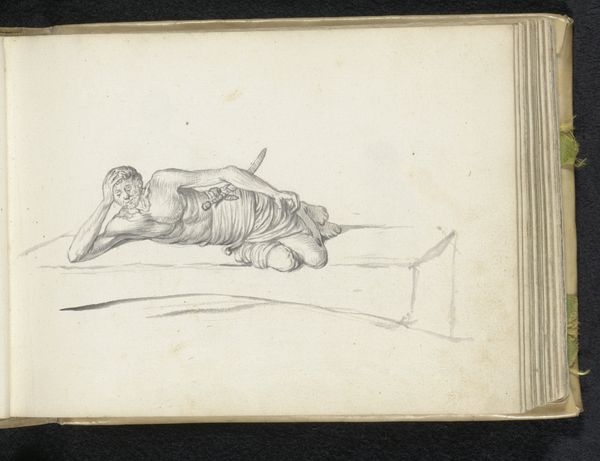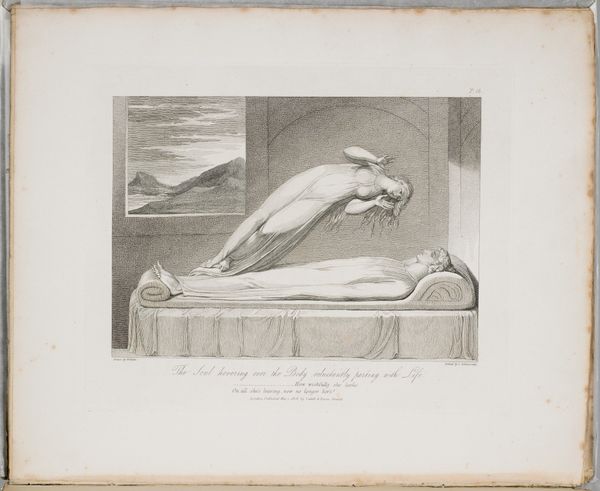
drawing, engraving
#
drawing
#
baroque
#
pencil sketch
#
figuration
#
nude
#
engraving
Dimensions: height 229 mm, width 310 mm
Copyright: Rijks Museum: Open Domain
Cornelis Bloemaert created this print, "Halfnaakte vrouw," using engraving, a process of incising lines into a metal plate. The incised lines hold ink, which is then transferred to paper under pressure, revealing the composition. Notice how the varying depth and density of lines create tone and volume, defining the form of the reclining figure. The cross-hatching technique, where lines intersect, is particularly evident in rendering the shadows and contours of her body and drapery. Engraving demanded considerable skill and time, as each line had to be carefully cut with a burin. The labor-intensive process reflects the value placed on craftsmanship and precision in the printmaking of Bloemaert's time. It also speaks to the economics of art production, where skilled artisans contributed to the dissemination of images, making art accessible to a wider audience through reproducible means. Consider the collaborative nature of printmaking: it often involved designers, engravers, and publishers, each playing a role in the final product. This division of labor highlights the complex social and economic relationships within the art world. By focusing on these material aspects, we gain a deeper appreciation for the social and cultural context in which the artwork was created, bridging the gap between fine art and the world of craft.
Comments
No comments
Be the first to comment and join the conversation on the ultimate creative platform.
